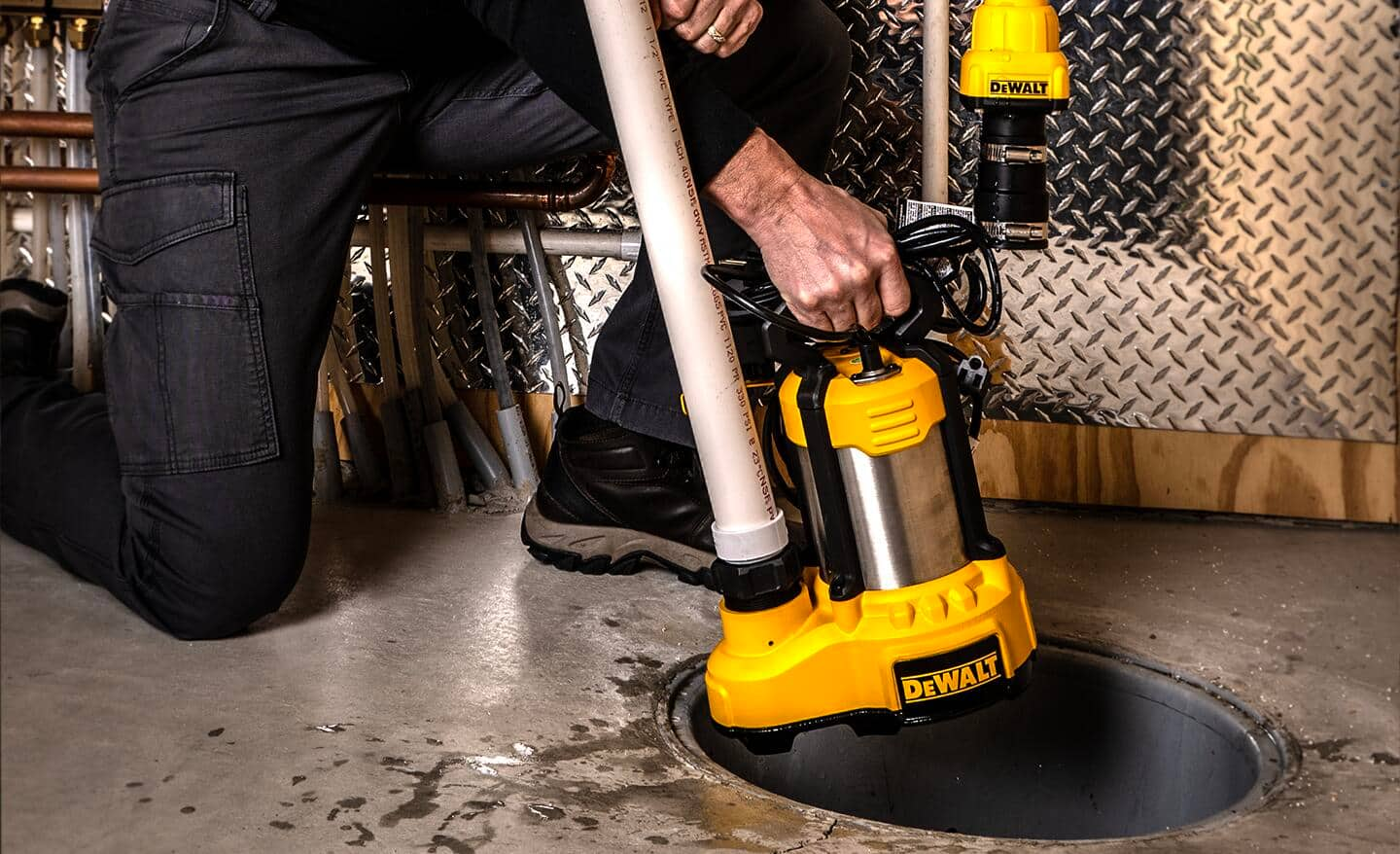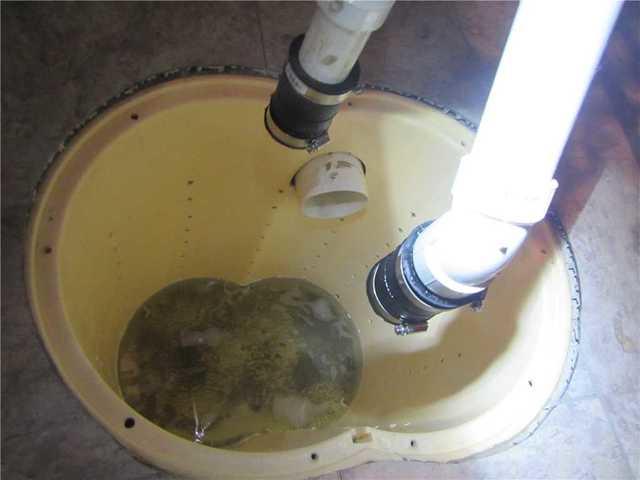Right here below yow will discover more quality insights on the subject of Cleaning & Maintenance Tips for Your Home's Sump Pump.

Sump pumps are essential components in lots of homes, specifically in areas vulnerable to flooding or too much dampness. They aid prevent water damage by efficiently getting rid of excess water from cellars or crawl spaces. However, like any other appliance, sump pumps require regular upkeep to ensure they function effectively when required the most. Cleaning your sump pump is a vital part of its upkeep, and recognizing exactly how to do it correctly can conserve you from pricey fixings and potential catastrophes.
Intro
Keeping a clean sump pump is crucial for its correct performance and longevity. Disregarding this essential job can lead to blockages, malfunctions, and inevitably, water damages to your residential property. As a result, finding out just how to clean up a sump pump is crucial for property owners who rely on these devices to maintain their cellars completely dry and secured.
Recognizing the Sump Pump
Before diving right into the cleansing procedure, it's important to have a standard understanding of exactly how a sump pump functions. Usually installed in a pit or basin below the basement flooring, a sump pump includes numerous essential elements, consisting of a pump, a float button, and a discharge pipe. When water gathers in the pit, the float button activates the pump, which then pumps the water out with the discharge pipeline, away from the building's structure.
Signs of a Dirty Sump Pump
Knowing when your sump pump needs cleansing is crucial for stopping possible breakdowns. Some typical indications that show an unclean sump pump include odd noises throughout procedure, lowered water flow, and visible particles in the pit. If you discover any of these signs and symptoms, it's essential to cleanse your sump pump immediately to avoid any kind of additional concerns.
Getting ready for Cleansing
Before you begin cleansing your sump pump, it's necessary to take some safety and security precautions. Beginning by shutting off the power to the pump to prevent any kind of electric mishaps. Furthermore, use proper safety equipment, such as handwear covers and safety glasses, to secure on your own from dust, debris, and prospective microorganisms.
Step-by-step Guide to Cleaning a Sump Pump
Shutting Off the Power
Begin by separating the power supply to the sump pump to prevent any kind of mishaps while cleaning.
Removing Debris and Dirt
Make use of a container or a scoop to eliminate any visible particles, dirt, or sediment from the sump pit. Dispose of the particles effectively to avoid it from obstructing the pump or the discharge pipe.
Cleaning up the Pump and Float Change
Once the pit is clear of debris, very carefully eliminate the pump from the pit. Examine the pump and the float button for any type of indicators of damages or wear. Use a soft brush or cloth to cleanse the surfaces and eliminate any accumulated grime.
Flushing the System
After cleaning up the pump and float button, purge the sump pit with clean water to get rid of any kind of remaining dust or sediment. This will help guarantee that the pump operates efficiently and efficiently.
Checking for Appropriate Functioning
Prior to reinstalling the pump, carry out a fast test to ensure that the float button triggers the pump appropriately. Pour some water right into the sump pit and observe the pump's procedure. If every little thing is working appropriately, you can reconstruct the pump and reconnect the power supply.
Upkeep Tips to Maintain Your Sump Pump Clean
Along with periodic cleaning, there are several maintenance pointers you can comply with to maintain your sump pump in optimum problem:
- Normal Evaluation: Inspect your sump pump consistently for any indicators of wear, damages, or clogs.
- Keeping the Surrounding Location Clean: Make Certain that the location around the sump pit is without debris, dust, and blockages.
- Evaluating the Pump Regularly: Examine your sump pump occasionally by pouring water right into the pit and observing its operation. This will help you identify any kind of prospective concerns before they rise.
Final thought
Cleansing your sump pump is an important aspect of its maintenance and makes sure that it runs efficiently when you require it one of the most. By following the steps described in this guide and including normal upkeep into your routine, you can extend the life expectancy of your sump pump and shield your home from water damage.
6 STEPS ON HOW TO CLEAN A SUMP PUMP PROPERLY
UNDERSTANDING SUMP PUMPS
Your sump pump plays a crucial role in protecting your home by managing and removing excess water. It primarily functions as a “shield”, guarding your basement against the damaging effects of water accumulation. The pump is housed in a sump pit in the lowest part of your basement, and its job is to pump out any water that collects there.
During heavy rainfalls or when snow melts rapidly, water can infiltrate your basement, posing potential risks like flooding, structural damage, and harmful mold growth. Here, the sump pump springs into action, pumping out the intruding water and directing it away from your home.
SAFETY FIRST
Before cleaning, remember to prioritize safety. Disconnect the sump pump from the power source to prevent any accidental electric shocks. Also, wear sturdy gloves to protect your hands from any sharp or dirty components within the pump.
REMOVE THE SUMP PUMP
After ensuring your safety, the next step is to remove the sump pump from its pit. Doing this might require careful maneuvering as you don’t want to damage any pump components. Once removed, clean the sump pit to remove any accumulated debris or sludge.
INSPECT THE PUMP
Inspect the pump for any visible signs of wear or damage. Check the power cord, float switch, and impeller housing. If any components look worn out or damaged, consider replacing them to ensure optimal performance.
CLEAN THE PUMP
Thoroughly clean the pump with warm, soapy water. Make sure to rid it of any dirt, gravel, or other debris that might impede its performance. You can use a toothbrush to clean the small, hard-to-reach parts of the pump.
REINSTALL THE SUMP PUMP
- Reinstall the pump into the sump pit
- Make sure it’s positioned correctly to remove the water effectively
- Once it’s back in place, reconnect it to the power source
TEST THE PUMP
Finally, pour some water into the pit to ensure the pump works correctly. It should start automatically and begin pumping out the water; if it doesn’t, check the power source and the positioning of the pump.
Remember, while cleaning your sump pump is an essential part of home maintenance, hiring a professional plumber for a thorough inspection and cleaning at least once a year is also important. This will ensure that your pump is in optimal condition, ready to protect your home from potential water damage.
BEST PRACTICES FOR CLEANING SUMP PUMP DISCHARGE PIPES
- Regular Inspection: Regularly inspect your discharge pipes, especially during heavy rainfall or snowmelt periods. Look for any signs of blockage or damage. Early detection of problems can prevent serious issues down the line.
- Periodic Cleaning: Over time, sediment and debris can accumulate in the discharge pipes, impeding the flow of water. Regular cleaning helps keep the pipes clear and functioning efficiently. You can use a high-pressure water jet to effectively clean the pipes.
- Insulation During Winter: In colder climates, discharge pipes can freeze, blocking the outflow of water. Protect your discharge pipes from freezing temperatures by insulating them with foam pipe insulation. This will ensure the sump pump can continue to discharge water even in freezing conditions.
- Proper Positioning: The discharge pipe should be positioned to direct water away from your home’s foundation. Improper positioning can lead to water seeping back into the basement. Ensure the pipe is long enough and angled correctly.
- Installation of a Check Valve: A check valve prevents water from flowing back into your sump pit after the pump has pushed it out. Installing a check valve helps maintain the efficiency of your sump pump and reduces the risk of flooding.
- Minimize Pipe Turns: Every curve or turn in the discharge pipe can decrease the efficiency of water flow. By minimizing turns and bends in your discharge pipe, you can increase the efficiency of your sump pump.
https://www.fullspeedplumbing.com/how-to-clean-a-sump-pump-properly9999/

I was made aware of that editorial on How To Effectively Clean A Sump Pump from someone on a different site. Are you aware of anybody else who is excited about the niche? Feel free to promote it. We truly appreciate your readership.
Click Here
Comments on “Leading Steps for Servicing Your Sump Pump”